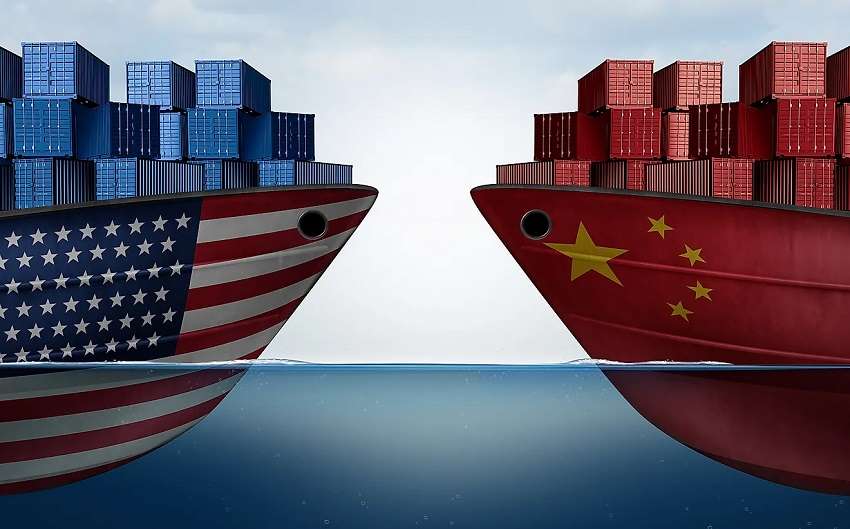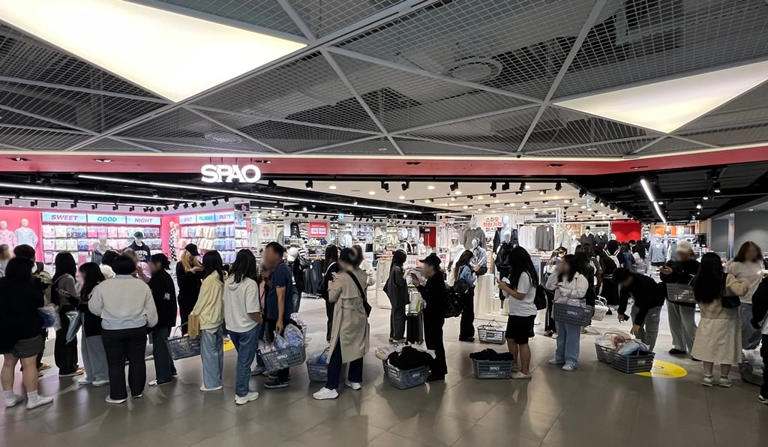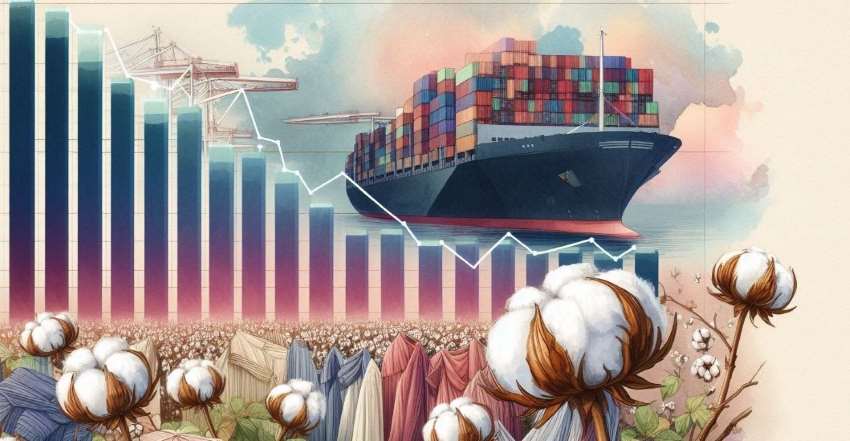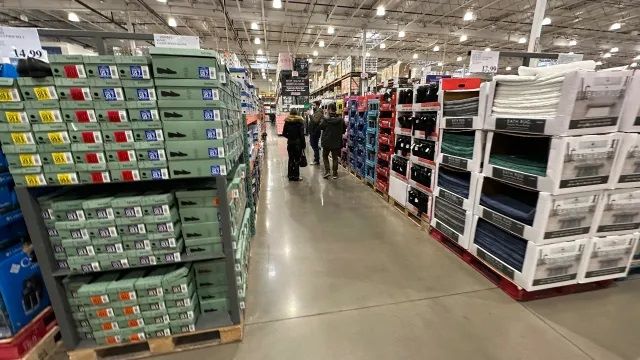FW
Messe Frankfurt has unveiled a new initiative, “Texpertise Econogy Insights,” focusing on five critical themes shaping the sustainable transformation of the global textile and clothing industry. Based on in-depth sustainability checks across 24 global trade fairs and insights from leading experts, the report reflects the sector's pressing challenges and innovative responses.
The textile industry, marked by vast complexity and massive scale producing textile waste equivalent to 370,000 fully-loaded Airbus aircraft faces a dismal one per cent recycling rate. With 99.7 per cent of industry players being micro, small or medium-sized enterprises, the need for coordinated transformation is urgent. Messe Frankfurt’s Texpertise network, comprising over 60 textile events in 13 countries, is positioning itself as a hub for collaboration and progress.
The newly launched report identifies five central themes: the adoption of Sustainable Development Goals (SDGs) for responsible business practices; transparency and traceability across supply chains; the environmental and functional trade-offs between natural, synthetic, and regenerated fibres; the implementation of eco-friendly process standards; and innovative approaches to textile recycling.
Insights for the report were gathered through Texpertise Econogy Checks, completed by 820 companies between January 2024 and January 2025 in Germany, France, the USA, and China. Participating organisations were assessed in areas such as supply chain sustainability, materials, processes, and innovation strategies.
Since 2008, Messe Frankfurt has been actively promoting sustainability through curated content and special showcases at its textile fairs. Now, under the Texpertise Econogy umbrella, these efforts aim to enhance visibility for sustainable innovations and strengthen global knowledge-sharing.
“Transformation requires cooperation,” says Olaf Schmidt, Vice President, Textiles and Textile Technologies, Messe Frankfurt, reaffirming the group’s commitment to leading the industry’s shift towards sustainability.
Showing consistent growth, India's raw silk production increased from 31,906 metric tons in 2017-18 to 38,913 metric tons in 2023-24. This growth is mirrored by an expansion in mulberry plantations, which grew from 2.23 lakh hectare in 2017-18 to 2.63 lakh hectare in 2023-24.
In 2023-24, the value of India’s silk goods exports also increased to Rs 2,027.56 crore (approximately $243 million), consolidating the nation’s position as the world's second-largest silk producer and top consumer, according to the Ministry of Textiles.
Additionally, India exported 3,348 metric tons of silk waste during 2023-24, according to the Directorate General of Commercial Intelligence and Statistics. While silk waste may include broken fibers or imperfect cocoons, it can still be repurposed into yarn or recycled into new products.
India is the second largest producer and the largest consumer of silk globally. According to the Ministry of Textiles, despite representing only 0.2 per cent of global textile production, silk plays a vital role in India's rural economy, providing employment and foreign exchange earnings. The Indian government supports the industry through schemes like Silk Samagra, the Raw Material Supply Scheme (RMSS), the National Handloom Development Programme (NHDP), and Samarth, focusing on production enhancement, weaver support, and skill development.
Encouraged by government programs like Silk Samagra, which has already benefited over 78,000 individuals, India's silk sector is weaving economic empowerment into its rich cultural heritage. From the shimmering Kanchipuram sarees to the earthy charm of Bhagalpur Tussar, silk continues to connect heritage with livelihoods across rural India.
John Enoh, Minister of State for Industry, Trade, and Investment, Nigeria, has announced the government's decision to create a strong and adaptable policy framework to support the growth of the country's Cotton, Textile, and Garment (CTG) sector. Through this policy, the government aims to reduce its dependence on imported clothing and generate $4 billion annually.
During a CTG stakeholders' meeting in Abuja themed ‘Co-creating solutions to grow Nigeria's CTG industry,’ Enoh stated, this framework and support will lessen Nigeria's dependence on foreign apparel, while also generating jobs and stimulating local manufacturing.
Enoh assured stakeholders of the government's commitment to promoting Nigerian-made goods and revitalizing the textile industry. He mentioned plans for a national campaign encouraging all ministries, departments, and agencies (MDAs) to prioritize local garments and goods. He cited Ogun State as an example, where over 70,000 public sector workers are required to wear Nigerian-made clothes weekly.
Further, Enoh promised the government would collaborate closely with institutions like the Bank of Industry to ease access to financing and machinery for garment and textile businesses.
Bluesign, a global pioneer in sustainable manufacturing, has marked a significant milestone with the continued expansion of its Denim Initiative during 2024-2025. Launched in 2020, the initiative aims to transform denim a category long known for its environmental impact by promoting clean chemical management and verified sustainable practices across the entire value chain. Over the past year, the initiative has seen remarkable progress, with a growing number of system partners aligning with Bluesign’s rigorous standards and bringing traceable, responsibly made denim products to market at an unprecedented scale.
A key development in this expansion is the inclusion of Nishat Mills Limited, one of South Asia’s largest vertically integrated textile companies, as a new Bluesign system partner. Based in Lahore, Pakistan, Nishat joins a global network committed to eliminating harmful substances from textile production and implementing cleaner, safer processes. With operations spanning spinning to power generation, Nishat supplies leading brands with premium fabrics. This partnership aligns its facilities with the Bluesign System, helping meet emerging regulations such as the EU Digital Product Passport, Corporate Sustainability Due Diligence Directive, and Corporate Sustainability Reporting Directive.
Nishat’s Executive Director Umer Shah called the certification a reflection of the company’s values and a step toward cleaner chemistry and responsible resource use. As the first mill in Pakistan to join the system, Nishat strengthens Bluesign’s influence in South Asia a key region in the global textile landscape.
Throughout the year, the Bluesign Denim Initiative added numerous partners across the textile ecosystem, including brands like Dondup in Italy and J Crew/Madewell in the USA. Leading laundries and mills also joined the movement: ISKO (Turkey), Advance Denim (China), Everest and LIM Group (Italy), Saitex (Vietnam/LA), Pure Denim (Italy), Prosperity Textiles (China), and Sanko Tekstil - Martelli Branch (Turkey). Chemical companies such as Archroma, RUDOLF, DyStar, Nearchimica, ZAITEX, Soko Chimica, and Officina+39 further strengthened the supply chain’s push for clean chemistry.
Bluesign also made significant inroads into the luxury fashion segment. Italian laundries Everest and LIM Group, which serve global names like Chanel, Gucci, and Louis Vuitton, adopted Bluesign standards, setting a new precedent for sustainable denim finishing and water stewardship. Dondup’s integration of the Bluesign system reflects Italy’s growing commitment to sustainable craftsmanship, while Madewell’s participation shows the increasing influence of American consumer demand for transparency.
As the initiative grows, Bluesign offers a practical blueprint for change providing facility assessments and system integration support to drive sustainable transformation. Each new partner expands the ripple effect, encouraging others across the supply chain to follow.
“This is how change happens,” said Bluesign CEO Daniel Rufenacht. “One partner at a time until sustainable practices become the industry norm.”

Julie Holt, Director, Global Business & Exhibition has led the expo since its inception in 2010. She is focused on developing the exhibition’s portfolio to assist more businesses realise cross border opportunities. Holt speaks about its growing importance for Indian textile business to increase their presence in the lucrative Australia market.
What is the vision for Global Sourcing Expo 2025, particularly the Sydney edition that’s relatively new?
Our vision statement is to be Australia’s ultimate global sourcing destination providing buyers with unmatched face to face sourcing opportunity in a B2B trade show for apparel, home textiles, footwear and accessories from global manufacturers and suppliers.
The Sydney edition, while drawing on the strengths of the flagship Melbourne edition, will reinforce buyers and exhibitors face to face sourcing experience and provide a biannual edition of the expo, thereby covering the major two sourcing markets of Australia – Sydney and Melbourne.
Given Melbourne's established presence, how does the Sydney edition align with the expo's long-term roadmap?
The businesses that visit the Sydney edition are distinct from the Melbourne expo. Additionally, the June edition allows seasonal planning and ordering of products for buyers. In the long-term it’s expected that buyers will visit both editions as exhibitors will bring two distinct collections. The exhibitors that participated in Melbourne have already started participating in the Sydney expo, with two different seasonal collections.
How is the Sydney edition different from Melbourne while maintaining consistent brand experience? What unique opportunities do you foresee in Sydney?
The Global Sourcing Expo provides consistent brand experience through uniformity in service that makes the expo one of its kind in Australia. The physical elements and service delivery components at both editions are consistent in terms of quality, ensured by the team behind the show.
Although exhibitors bring trans-seasonal collections to both expos, seasonal differences are reflected in the choice of fabric texture, weight and colour palette. The two editions will remain distinct through the businesses that these cater to. In Sydney, we expect additional buyers from businesses and boutiques based in Queensland, Northern New South Wales and the Byron Bay region.
What are your buyer turnout projections for Sydney? Is the Sydney edition targeting specific sectors or regions?
Sydney is expected to continue its strong growth much like last year that saw 43 per cent increase in visitors. Also, Sydney-based buyers are aware that there is a dedicated expo there and they are scheduling their attendance and sourcing activity around that. While we are targeting all product sectors in Sydney like Melbourne, we continue to focus on promoting sustainable solutions across both shows.
India is a significant sourcing market for Australia. What is the importance of Indian participation in 2025 edition, especially in Sydney? What can Indian exhibitors expect?
Indian participation at the Global Sourcing Expo has seen good growth since 2010. The Australia-India ECTA has been a catalyst in this growth as Indian exporters are now at par with China, Bangladesh and ASEAN countries.
Indian exhibitors can leverage their differentiated skills (in prints, embroidery, hand-made), the vertically integrated set-up from fibre to fashion, and authenticated sustainability claims. Additionally, the home textiles sector has unparalleled advantage in showcasing products made of recycled fibres from Panipat. Also, Indian exhibitors can expect a market that is number two in the world in consumption of clothing and textiles on a per capita basis. With a consumer who is always looking for style, colour and choices, exhibitors need to be mindful that minimum order quantities (MOQs) are critical to securing leads. Australia has low MOQs. Additionally, Indian exhibitors can expect healthy competition from other Indian exhibitors and suppliers from over 14 countries at the Sydney event. With uncertainty in global trade, Australia offers a relatively stable environment in terms of trade besides familial and cultural linkages.

Are specific Indian export councils, trade bodies, regional clusters being directly engaged for participation in either city?
For long, Global Sourcing Expo Melbourne has enjoyed strong support from India as the India Trade Promotion Council was a seminal part of the expo in 2010 and from there, interest from across India has grown enormously. This includes national organisations, state-based organisations such as the government of Tamil Nadu and industry clusters. For example, the Federation of Indian Export Organisations (FIEO), Handloom Export Promotion Council, Apparel Export Promotion Council, Council for Leather Exports and many other export councils have been consistent participants.
In Melbourne 2024, there was one trade organisation, eight export promotion councils and one SME cluster from Kolkata. We expect to see similar result for Melbourne in 2025 particularly given the global dynamics and the opportunity that Australia can offer Indian organisations in terms of a stable and affluent market.
This year, a broad range of companies from India are participating through two leading organisations, FIEO and Wool and Woollens Export Promotion Council and the number of participants will exceed last year’s. Discussions are currently underway with two other Indian organisations to participate in this year’s Sydney edition.
Are any emerging sectors gaining momentum for 2025, especially in the Sydney edition?
Several sectors that feature at the Sydney expo are gaining momentum. These include: sustainable fashion, smart textiles, luxury swimwear, activewear innovation and digital textile printing. As organisers, we will promote these sectors to ensure the expo delivers on creating immediate business opportunities between buyers and sellers.
How do product category trends differ between Sydney and Melbourne?
Both have vibrant apparel and textile industries, but they excel in different areas. Sydney is known for its focus on high-end fashion and luxury brands. It has a strong presence in luxury apparel and accessories. The city is also a hub for sustainable and eco-friendly textiles, reflecting its commitment to innovation and environmental consciousness.
Melbourne has a thriving creative and artistic community and excels in streetwear, independent labels and niche markets. It also has a major focus on technical textiles and functional apparel, and sports and outdoor wear.
What kind of buyers and businesses are expected in Sydney?
Sydney has a higher concentration of apparel wholesalers reflecting its role as a gateway for international trade. Its proximity to major ports and global business connections make it a hub for large-scale distribution. Boutique retailers are also prominent, catering to the city’s affluent clientele and high-end fashion market. E-commerce retailers are growing rapidly across both Sydney and Melbourne.
Melbourne known for its creative and independent spirit has a good presence of boutique retailers and is a stronger manufacturing hub.
Are any new initiatives, forums, or matchmaking platforms being introduced in the 2025 editions to boost B2B networking? Will there be any India-focused sessions or forums?
Both editions of the expo already include industry forums and matchmaking through the Global Sourcing Seminar program that enables contact between industry speakers and visitors/exhibitors as part of Q&A and fireside discussions. The events also include both formal and informal networking events. In our seminar program for India, we always give space to convene an India-focused session. However, none are confirmed for Sydney, we are working towards including a session in Melbourne.
How will the Expo provide value to first-time exhibitors or SMEs, particularly those from developing regions like India?
The organisers arrange a pre-show webinar to help first time exhibitors prepare for the expo. Also, the app that is provided to all exhibitors helps them track registered buyers arrange business meetings and record visits to the stand.
The Global Sourcing Seminar program helps exhibitors gain insights into the Australian market, listening to experts, brands and retailers. For exhibitors, seminar attendance isn’t charged, which is otherwise at least AU$40 per seminar. The organisers make industry introductions on a case-by-case basis at the expo through our relationship with a network of experts in attendance at the expo.
What are your strategies to maximize buyer footfall in Sydney and ensure good return on investment for participating brands?
We continue to broaden our marketing campaign, particularly our digital campaign, and leverage our industry partnerships. The results achieved in our most recent Sydney and Melbourne editions attest our efforts in attracting a broader audience, with growth of 43 per cent and 29 per cent in visitor attendance respectively.
We are investing significantly in targeted digital advertising, search marketing, and social media promotions, ensuring we reach qualified sourcing professionals across Australia and New Zealand. Our year-round strategy includes: eDM campaigns, retargeting, lookalike audience development, and partnership amplification with key buying groups, associations, and trade media.
We understand that a high-quality visitor audience is fundamental to exhibitor success, and our campaign is designed to maximise footfall and deliver qualified buyers actively seeking sourcing opportunities. Campaign activities are continuously reviewed with adjustments made to ensure we are both maximising and optimising the visitor audience — ensuring the strongest possible return on investment for participating brands.
What is your message to potential Indian exhibitors considering Sydney for the first time?"
Global Sourcing Expo has been a proven success for Indian exhibitors that have repeatedly exhibited at both Sydney and Melbourne editions. If you have a unique point of differentiation, the Australia market and this expo is for you. Welcome!

The global garment industry is a complex web of production, distribution, and consumption, with shifting trends and regional disparities shaping its landscape. A focal point in understanding this dynamic is the comparison between the European Union (EU) and the United States (US) in terms of garment imports. Data compiled by David Birnbaum, a strategic planner for the global garment export industry, reveals a significant and growing divergence between the two regions.
The stark contrast in import volumes
Birnbaum's analysis highlights, the difference in garment import volumes between the EU and the US is substantial. As of 2023, EU garment imports were 5½ times higher than those of the US. This disparity highlights the EU's dominant position in the global garment import market compared to the US.
The table, derived from Birnbaum's data, illustrates the trend in garment imports for both the US and the EU over the years.
Table: Garment imports trends US and EU
|
Year |
US imports |
EU imports |
|
2015 |
89,089 |
390,042 |
|
2016 |
83,969 |
383,393 |
|
2017 |
83,550 |
399,334 |
|
2018 |
86,697 |
428,238 |
|
2019 |
87,384 |
428,676 |
|
2020 |
71,166 |
376,418 |
|
2021 |
87,287 |
434,685 |
|
2022 |
105,353 |
493,201 |
|
2023 |
81,591 |
447,212 |
|
2024 |
83,710 |
- |
The data reveals that the US garment import trends peaked in 2019, followed by a sharp reduction in 2020 due to Covid-19 lockdowns. The subsequent years saw fluctuations, with a collapse in imports in 2023. In contrast, EU garment imports did not follow the same pattern and were not distorted to the same extent as those of the US.
There are several reasons for the EU's stronger position in garment imports. First is the market size, the EU represents a larger and more stable market for garment imports. Also the EU market demonstrated greater resilience to the disruptions caused by the Covid-19 pandemic and subsequent market corrections.
Birnbaum's analysis provides valuable insights into these diverging trends. As a strategic planner for the global garment export industry, his data-driven approach highlights the importance of understanding regional differences and market dynamics. Birnbaum's data indicates that the differential between EU and US garment imports is expected to increase over time, reflecting the ongoing shifts in the global garment trade.
US-based crop-evolution company Avalo has appointed textile innovation expert Tricia Carey as Chief Commercial Officer to lead the market introduction of its new low-input cotton. Known for advancing sustainable fibres like Tencel and promoting circularity at Renewcell, Carey brings over two decades of experience in scaling environmentally focused textile technologies.
Her appointment comes as Avalo accelerates its cotton programme in the Texas Panhandle. For the past two years, the company has collaborated with local cotton growers to develop a regionally adapted variety that requires no irrigation and uses up to 30 per cent less fertilizer. This variety not only lowers input costs but also reduces environmental impact, offering a sustainable solution for Texas’s water-stressed, high-cost agricultural sector.
Starting this harvest season, Carey will spearhead efforts to bring this “high-quality, low-carbon footprint” cotton to global markets. The initiative aims to help brands tackle rising input costs and scope 3 emissions by offering a more sustainable raw material. Avalo CEO Brendan Collins praised Carey’s industry-shaping work, calling her a strategic leader with deep supply chain expertise.
Beyond cotton, Avalo is expanding its machine-learning powered crop development platform into other essential commodities. The company has already partnered with CocaCola Europacific Partners for innovation in sugarcane and is making progress in rubber, rice, and other climate-vulnerable crops.
Commenting on her new role, Carey said she was excited to join a mission-driven team working at the intersection of agriculture, technology, and textiles. “Avalo’s platform enables faster and more sustainable product development while supporting farmers at the core of agriculture,” she noted. “It’s an incredible opportunity to help reshape the future of farming.”
Tonello marked a bold new chapter in sustainable garment finishing at this year’s Kingpins Show in Amsterdam, unveiling the final phase of its Laundry (R)Evolution an integrated vision of a modern, digital, and eco-conscious laundry process.
Leading the innovation is The Laser 2.0, a next-gen laser system offering high-speed, precision-driven garment marking. Designed with creatives in mind, it eliminates human error while expanding design capabilities with digital efficiency. Show attendees witnessed its power in Engineered Illusions, a collection showcasing laser-only finishes replicating traditional treatments like fading, creasing, and texture.
Tonello also introduced its All-in-One System, a highly advanced washing solution combining four sustainable technologies to reduce resource consumption while maximizing productivity. Further enhancing the eco-system is the debut of a proprietary dryer line. This in-house developed range includes eight energy-efficient models, featuring high-permeability drums, optimized airflow, and inverter-driven transmissions all Heat Pump compatible for lower emissions and energy use.
A highlight of Tonello’s showcase was a fully finished garment collection using the complete integrated system. Each piece is tracked by Metro, offering transparent, real-time data on water, energy use, and carbon footprint ensuring traceability and accountability.
In the dyeing domain, Tonello revealed an evolution of its Sulfur Essence collection, featuring DyeMate, the world’s first indigo garment dyeing system also suitable for sulfur and VAT dyes. The system enables bold, blended dye effects across diverse fabrics.
Rounding out the experience was The Boxes, featuring Denim Renaissance: The Beauty of Time, a visionary tribute blending history and innovation through refined, raw, and transformative denim.

Montréal hosts Premiere Vision’s first Canadian edition
For the first time ever, Premiere Vision, the leading international trade fair for fashion professionals is arriving in Montreal, Canada, on April 22 and 23. Hosted at the Grand Quai, this landmark event will welcome over 100 exhibitors and feature 24 expert-led conferences focused on key industry challenges and opportunities. The event marks Premiere Vision’s Canadian debut and only its second foray into North America, a region of growing strategic importance for the textile and leather sectors.
Supported by mmode, the fashion cluster of Quebec, this new venture aims to create a global development platform for the textile industry. Florence Rousson, Chairwoman of the Executive Board of Premiere Vision, emphasized the show’s significance, noting that “in an unstable international context, the market needs to redefine its reference points and strengthen its position. PV Montreal offers two days of unique and unprecedented business opportunities.”
Valerie Plante, Mayor of Montreal, echoed this sentiment, praising the city’s status as a UNESCO City of Design and its creative edge. She encouraged local fashion professionals to engage with the event and “connect with international fashion leaders and creatives.”
Canada takes center stage with strong international presence
Over the course of two days, exhibitors from across the globe will highlight the global scope of the fashion supply chain. Canada leads the representation with 20 percent of all exhibitors, followed by strong participation from South Korea, Portugal, China, France, Turkiye, the United States, Italy, and Spain. The show’s six sectors designs, fabrics, manufacturing, leather/furs, accessories, and smart creation underscore the diversity and interconnectedness of the industry.
“Canada is a key player in the global textile industry,” said Mathieu St-Arnaud Lavoie, Managing Director of mmode, citing the CAD 7.9 billion in added value from the fashion and apparel sector to Quebec’s GDP and the 77,500 direct industry jobs. The presence of Premiere Vision in Canada signals a new chapter for the country's role in global textile and fashion networks.
Immersive experiences and cross-disciplinary creativity
Beyond exhibitions and conferences, Premiere Vision Montréal promises an immersive visitor experience. A dedicated fashion information space will showcase the Spring-Summer 2026 color and trend forecasts, giving buyers and designers a head start on seasonal planning. A networking cocktail event on the opening evening will bring together key industry figures and institutional partners.
Highlighting Montreal’s creative spirit, the event will also feature a unique segment titled One Day, One Chef, One Designer: Celebrating Creativity. These sessions will explore the intersections of culinary and fashion arts. On day one, Debbie Zakaib, Ifigenia Hill, and Patrice Demers will lead the discussion. On the second day, Catherine Lecuyer, Markantoine Lynch-Boisvert, and Dario Bivona will share their insights, offering attendees fresh perspectives on creativity across disciplines.
With its debut in Montreal, Premiere Vision is not only expanding its global reach but also reinforcing the city’s status as a vibrant hub for innovation, design, and sustainable business development in the fashion industry.
The Hong Kong Polytechnic University (PolyU) has launched the International Future Challenge (IFC), a global innovation and entrepreneurship competition spanning seven regions across Hong Kong and Mainland China. The event is open to technology talents, startups and project teams worldwide, encouraging them to solve pressing industry problems with innovative solutions.
An information session was recently held for the Hong Kong region, featuring industry leaders discussing sector-specific trends and challenges. The competition follows a “1+N” framework, with Hong Kong as the main region and six others in Huizhou, Wenzhou, Qianhai in Shenzhen, Shanghai, Nanjing, and Jinjiang.
This marks the first time PolyU is expanding its Future Challenge to an international level. Global participants must either collaborate with the PolyU community, use PolyU-licensed technologies, or connect through the university’s Mainland Translational Research Institutes (MTRIs). The challenge offers shortlisted teams access to resources like corporate consultations, Mainland visits and international exposure.
Each region focuses on local industry priorities such as fintech, advanced manufacturing, AR/VR, biotechnology and more. While all regions include an Open Track, Hong Kong and Jinjiang also offer a Student Track, providing students training, immersive regional tours, and opportunities to explore entrepreneurship in areas including Singapore, Vietnam, Xinjiang and the Greater Bay Area.
The total cash prize pool exceeds HK$2 million, with a grand final prize of up to HK$500,000. Winners also receive trial funding and support through the PolyVentures ecosystem.
Supported by sponsors such as Waterdrop Inc., CHINT Group, and Flair Capital, and partners including Cathay Pacific, Nike, and NTT Com Asia, IFC aligns real-world challenges with participant solutions. PolyU Vice President Prof. Christopher Chao emphasized the competition’s role in fostering innovation and economic development across participating regions.












